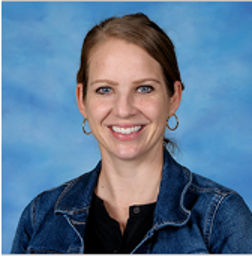We spoke with with North Carolina teachers Tabitha Vuljanic and Sandy Cebollero about taking best practices from professional learning and implementing Collaborative Classroom’s evidence-based program, SIPPS®, is helping them turn learning into results-oriented instruction. Thank you for speaking with us Tabitha and Sandy!

Tabitha Vuljanic, second- and third-grade teacher at Shady Brook Elementary in Kannapolis, North Carolina
In years past what did you do when a student was struggling with foundational skills?
In years past when I had struggling students, I would spend multiple planning periods putting together a scope and sequence of phonics and guided reading lessons.
Despite the time I spent planning and pulling resources from various sources, I would see little to no measurable progress after working with students for several months. That would send me on a search for another resource or tool to help students improve. I’d find myself spending more and more time researching and planning, but results continued to lag.
How has the Science of Reading training you’ve received informed your current instruction?
All elementary school teachers in North Carolina are participating in LETRS® training. The training really emphasizes the importance of foundational skills, especially automatic word recognition, for reading comprehension.
During the training, I’ve been reminded not only of the “what” but also the “how” of word recognition instruction. Word recognition skills must be taught in a systematic and explicit way. During the training, we’re exposed to processes and ways to teach the foundational skills. My brain automatically defaults to the question, “How am I going to teach this? What will I use to implement this?”
Information and learning is great, but when there is no vehicle to implement this abundance of information it becomes just that—information—and no longer a tool to improve student’s reading skills! I know that I can’t return to the practices of the past where I spent hours researching and searching for tools, only to find that they do not impact my students in an efficient and accelerative way.
What is the impact of having Being a Reader™ and SIPPS in addition to that training for you and for you students?
Having Being a Reader and SIPPS as a resource to use has been game changing for the instruction in my classroom. Now, when I am exposed to new evidenced-based practices, I have a go-to resource for implementing them.
Additionally, ongoing training and support for implementing Being a Reader and SIPPS helps me continue to make connections between the training I’m receiving in LETRS and the practices I’m implementing in my classroom.
And most importantly, I’m seeing the training combined with aligned resources have an immediate impact on my students! While I always strive to help students make connections in all areas of learning, it wasn’t always evident in the past. Now, it’s effortless; they do it everyday on their own!
Students are progressing through SIPPS at the rate we expect. Third graders who entered the year reading with first-grade level foundational skills are “graduating” from SIPPS Extension level prior to winter break! All of my students are more engaged in independent reading, feeling extremely successful, and have taken full ownership over their learning.
As a teacher, I see a significant impact in my preparation, consistency, and I feel so good being able to celebrate the student success that is coming from having evidence-based curricular materials at my fingertips.

Sandy Cebollero, second-grade teacher at Sherwood Forest Elementary in Winston-Salem, North Carolina
In years past what did you do when a student was struggling with foundational skills?
When a student struggled with foundational skills, I would try to work with them one on one. We would do word sorts from Words Their Way, write dictated sentences and cut them up to make words and scramble and unscramble them, concepts of print activities, phonics worksheets, read alouds, decodable texts, running records and three cueing system, etc. Overall, I didn’t see much of a change despite my well-meaning efforts.
How has the Science of Reading training you’ve received informed your current instruction?
Since attending and participating in a Science of Reading training, I feel better prepared to work on phonemic awareness skills, phonics skills, sight words, and decodable texts in a meaningful way.
I understand now the mistakes students are making and where they are coming from. Also, I understand how to use assessment tools to make meaningful instructional decisions for my students’ instruction in one-on-one, small-group and whole-group lessons.
What is the impact of having Being a Reader and SIPPS in addition to that training for you and for you students?
The Science of Reading training I attended was wonderful but using that knowledge in conjunction with SIPPS and Being a Reader is the icing on the cake. The lessons designed by Collaborative Classroom give me as an educator a road map to follow and meet the needs of my students right where they are.
Also, SIPPS and Being a Reader provide coaching along the way to help guide my instruction to make it meaningful for the students. The sidenotes and tips are like having a coach inside my classroom helping aid me in giving the most useful instruction.
Since implementing SIPPS and Being a Reader into my classroom, I have seen gains in skill progression and the love of reading and writing rolled into one.
Without the curriculum to guide me, my Science of Reading training would be there, but I would have to decide how to create effective lessons on my own. As teachers, we have such little time to create strong, effective lessons. SIPPS and Being a Reader lessons are well thought out, effective, and purposeful.
***
Related:
- Learn more about SIPPS.
- Learn more about Being a Reader.
- Read about How SIPPS is Changing the Trajectory for Striving Readers in Dexter, Michigan.
